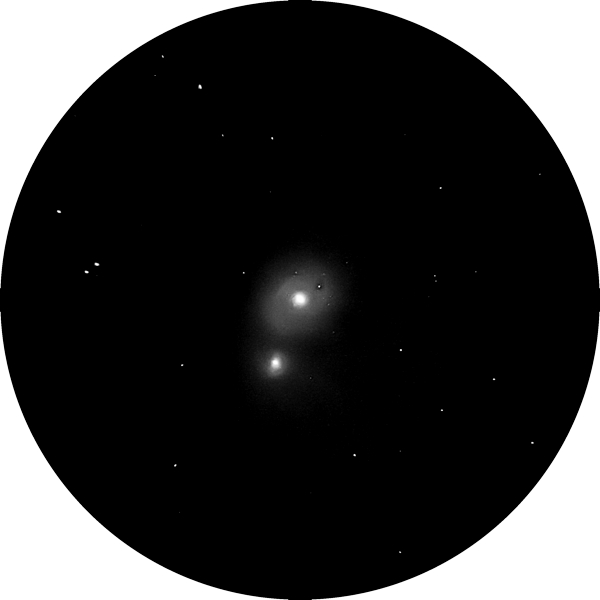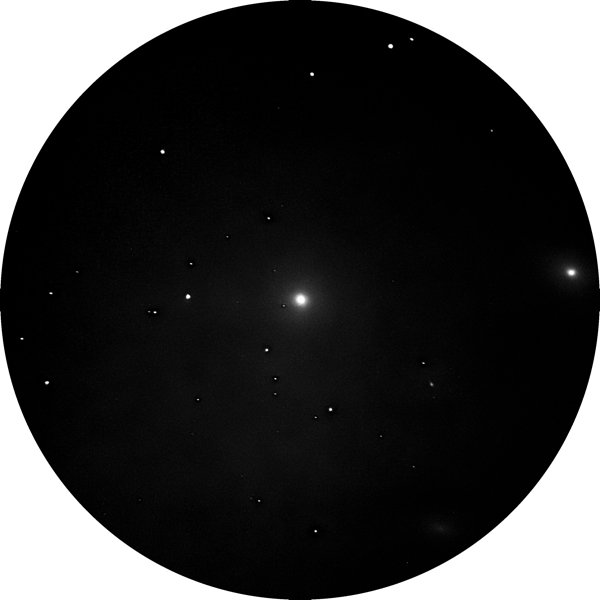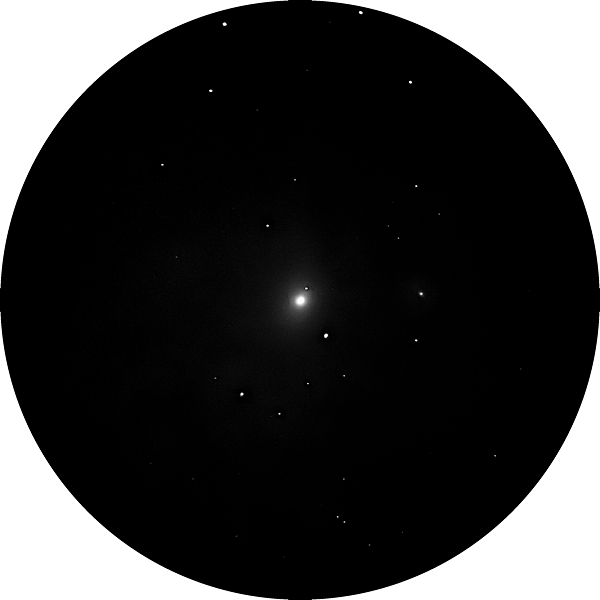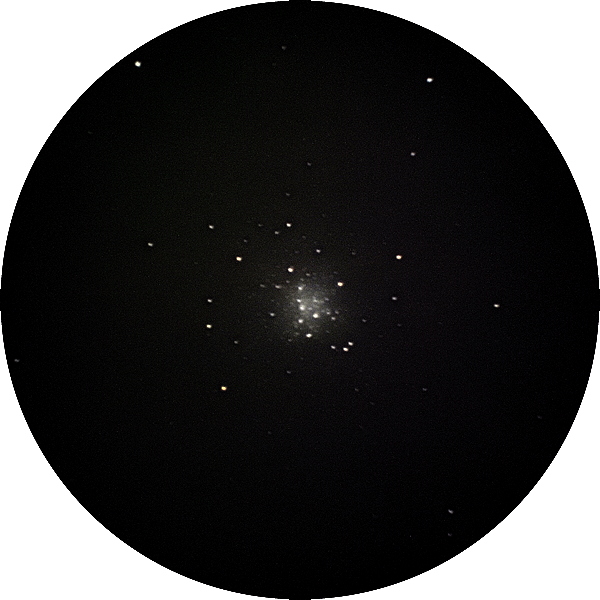Venus shadow, iPhone Messier Galaxies
Posted: 15 April 2020
Clouds returned on Saturday, 11 April 2020. Sunday, 12 April, the sky was mostly clear until near sunset when clouds and wind kept me out of the observatory. Monday, 13 April, was cloudy and still windy. Tuesday, 14 April, the sky cleared.
|
Open: Tuesday, 14 April 2020, 1820 MST Temperature: 79°F |
Session: 1455 Conditions: Clear |
Equipment:
12" f/8 LX600 w/StarLock
2" 24mm UWA eyepiece
2" 9m 100° eyepiece
2" 30mm eyepiece
1.25" 15mm eyepiece
Camera:
iPhone 11 Pro Max
D850 DSLR
1826 MST: LX600 ON, StarLock OFF, High Precision OFF.
Viewed Venus, 102X and 271X.
Took this handheld afocal 271X photo of Venus using NightCap Cam (ISO 21, 1/450, 2X lens).

Viewed Venus, 81X.
Saw two young deer, but they were too far away to get a photo.
1848 MST: I relaxed on the observatory patio bench while waiting for "the stars to come out".

1854 MST: sunset.
1924 MST: back inside the observatory.
1925 MST: last look at Venus, 81X.
Slewed to M51 (Whirlpool Galaxy). It was not yet visible against the twilight sky.
1941 MST: M51 now faintly visible, 81X.
1944 MST: while observing M51, 81X, I saw two satellites pass through the field-of-view (FOV) within seconds of each other on the same path. They were probably SpaceX Starlink satellites. Estimated their Magnitude as +7 based on a star visible in the FOV.
2000 MST: left observatory to begin setting up to photograph a shadow cast by the planet Venus. I went to location that blocked much of the sky and distant lights. I mounted the D850 DSLR on a tripod and placed my target object by a white sheet of paper.
The first photo is Venus in the western sky (f/2.8, 10 seconds, ISO 4000, FL 50mm). The second photo (cropped) of an International Dark-Sky Association (IDA) pin clearly shows the shadow cast by bright Venus (Mag. -4.5). It was taken with the D850 DSLR (f/2.8, 30 seconds, ISO 6400, FL 24mm).


Mouseover or tap on image for labels
2039 MST: back in the observatory.
Mounted the iPhone 11 Pro Max on the 2" 30mm eyepiece using the Levenhuk adapter. Began doing afocal 81X imaging of some galaxies for my iPhone Messier Catalog Astrophotography Album. All images were StarLock autoguided and taken with NightCap Camera (ISO 12500, 1sec, 1 minute exposure, 1X lens).
M51 (Whirlpool Galaxy)

M64 (Blackeye Galaxy)

M84

M85

M86

I also tested the iOS app SpiralCam for my upcoming review.
I then viewed M68 (globular cluster), 102X and 163X.
Mounted the iPhone on the 15mm eyepiece for this StarLock afocal 163X photo of M68 using NightCap Camera (ISO 12500, 1sec, 1 minute, 1X lens).

2221 MST: LX600 OFF.
2235 MST: took a Sky Quality reading and reported it to Globe at Night.
|
Close: Tuesday, 14 April 2020, 2238 MST Temperature: Clear°F |
Session Length: 4h 18m Conditions: 52, SQM 21.35 |
Tuesday, 14 April, I participated in a Facebook Live talk hosted by Scott Roberts of Explore Scientific. In anticipation of the upcoming International Dark Sky Week, 19-26 April, my talk was on the IDA "International Dark Sky Places" Program. Facebook members can see a replay of the talk at "Explore Scientific".
Comments are welcome using Email. Twitter users can use the button below to tweet this report to their followers. Thanks.
Cassiopeia Observatory Home Page
Copyright ©2020 Michael L. Weasner / mweasner@me.com
URL = http://www.weasner.com/co/Reports/2020/04/15/index.html
